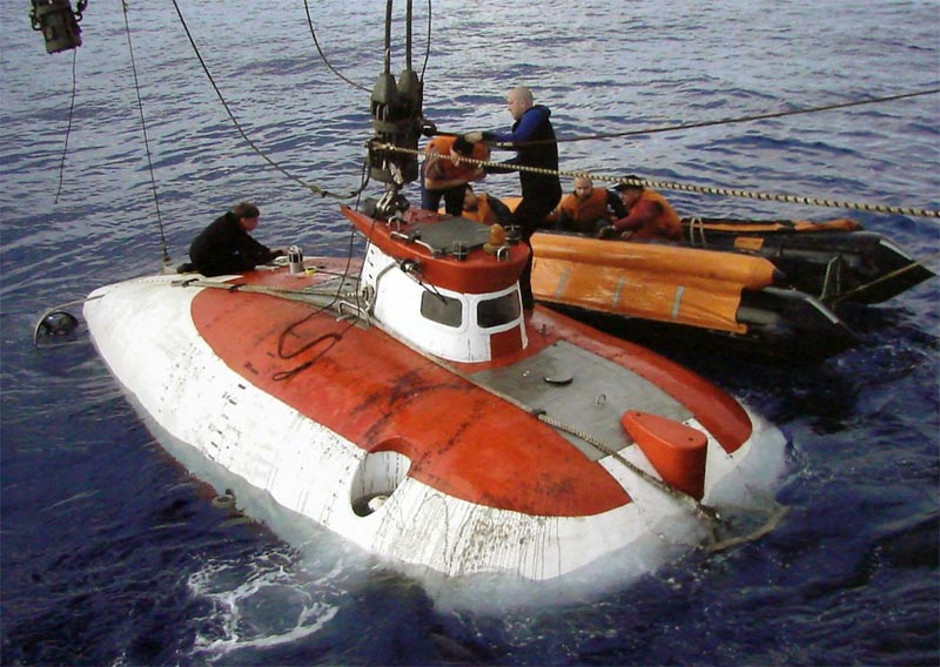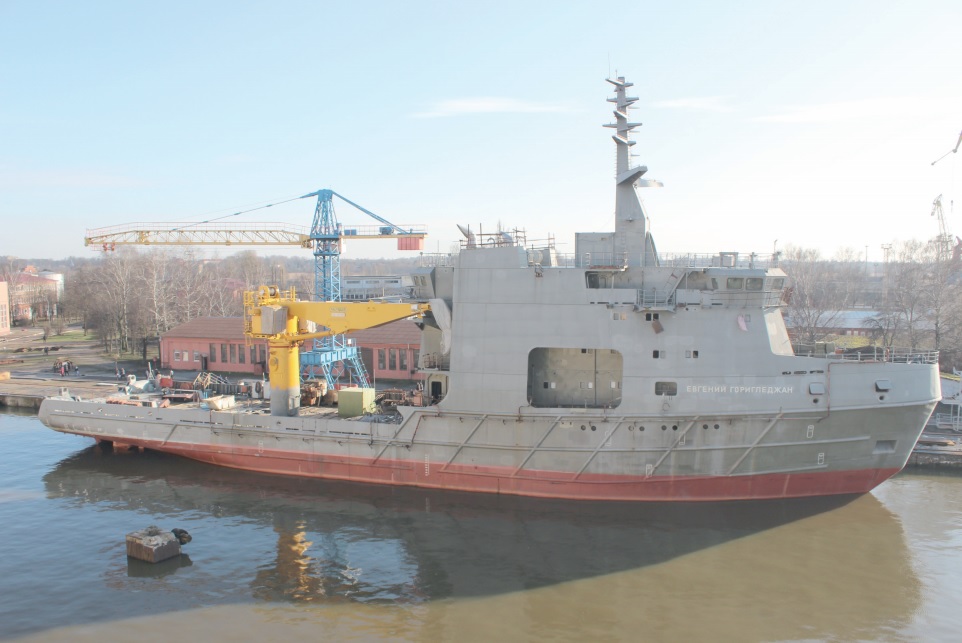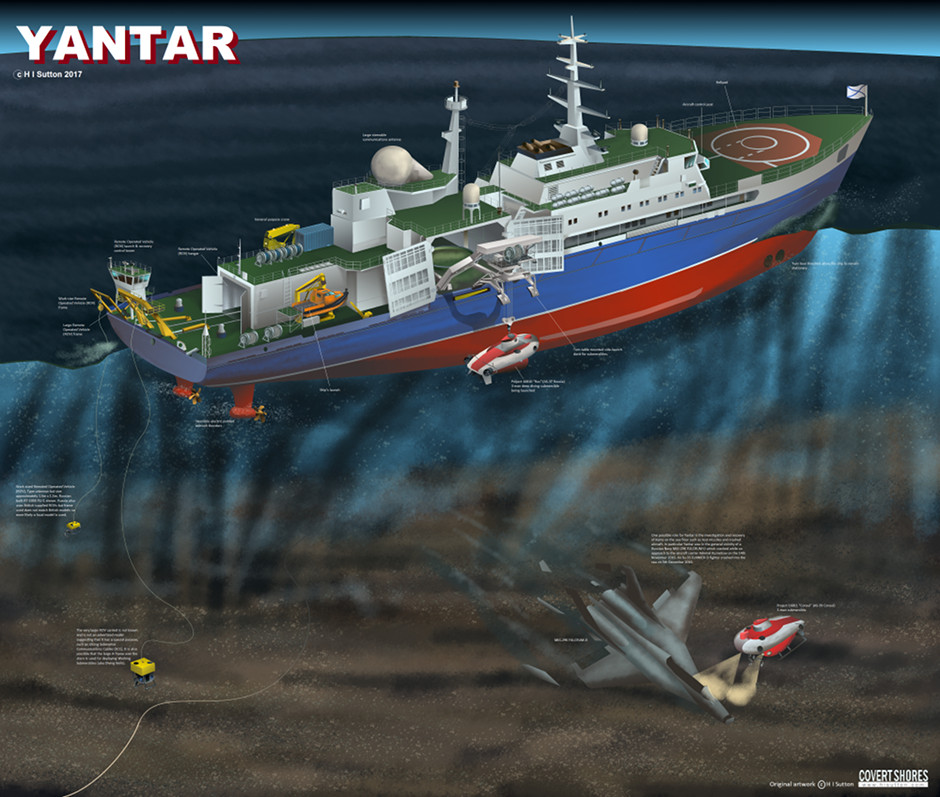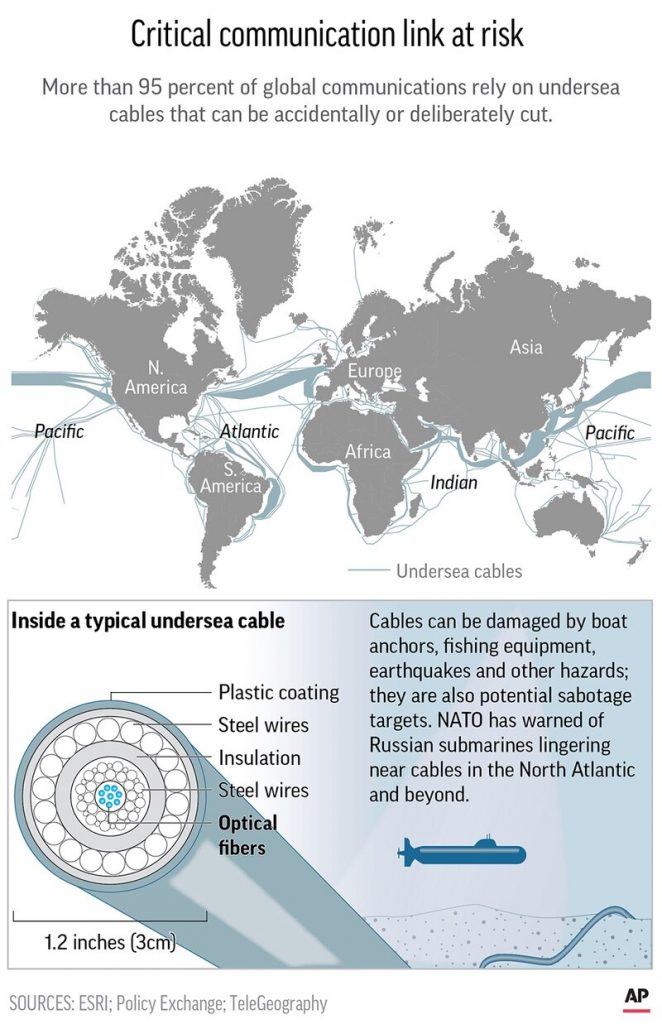Within last 3 years the Russian Navy deep-sea forces has been developed actively and rapidly and their operations significantly increased.
Russia’s spy-ship Yantar (project 22010) is a carrier for mini-submarines and submersibles. Within the past year the Yantar has been increasing its activity in the waters of South America with sailing across the Atlantic. The ship makes frequent stops indicating deep-sea works performed. In 2018, it used a remotely operated unmanned underwater vehicle to scour the ocean floor near the coast of Argentina.
An analysis of the movements indirectly confirms its interest in fiber-optic transatlantic cables. Geographically in the same zone there is another intelligence ship, the Admiral Vladimirsky, which has been officially participating in a round-the-world expedition since December 2019. On March,5, 2020 it is expected to anchor at the Uruguay port of Montevideo. One more intelligence vessel, Marshal Gelovani, will also join on its routes. Thus, Russia’s Navy three intelligence ships sail coordinately across the Atlantic waters at the same time. The presence of three intelligence ships in the same territorial waters indicates a high-intensity work either as preparation for a certain event or fulfillment of the strategic advantage task.


The Yantar and other intel ships are operated by the Russian Navy’s Main Directorate of Underwater Research (GUGI), military unit 45707. It consists of the 10th Department of hydronauts and the 15th Central Research Laboratory of the Ministry of Defense of Russia. The Directorate reports directly to the Ministry of Defense that means that it performs intelligence activity.
The GUGI also operates ‘Poseidon’, a 100–megaton nuclear warhead underwater drone, that Russia’s military high-ranking officials consider as a weapon to attack US maritime nuclear forces.
The GUGI structure included the deep-sea vehicle AS-31 (the project 10831) where fire in July 2019 killed 14 people.
In 2019 the Ministry of Defense of the Russian Federation and the GUGI received two intelligence ships: Project 02670 ‘Evgeny Gorigledzhan’ and Project 22010 ‘Almaz’. The latter carries manned deep-sea vehicles like ‘Rus’, ‘Konsul’, and rescue vehicles like ‘Bester’. One more spy-ship project 20183 has ice-class to operate in Arctic.

February 18, 2020 there was information about resuming the active phase of another ship (Project 02670) construction.

The mentioned intelligence ships specialize in seafloor exploitation, search operations and communication systems connection. Project 22010 ships can intercept messages transmitted through fiber optic cables and communication cables lying on the bottom. As sources at the Pentagon inform, Moscow can damage underwater communications deliberately to paralyze the Internet, thereby destroying the global economy as work of Western enterprises and institutions will be stopped, or install special devices to bug communication channels, or suppress submarine detection systems operation, a single DOD Information Network (DoDIN) sensors.

‘The London-based Sunday Times’ reports that The Russian government sent a team of spies to Ireland to monitor undersea fiber-optic cables, which enable communications traffic between North America and Western Europe, according to a new report. The spies were allegedly sent to Ireland by the Main mil intel Directorate of the General Staff of the Russian Armed Forces, which is known in Russia as GRU.
Due to its geographical proximity to both North America and Europe, Ireland constitutes a major hub for several of the more than 300 undersea cables that currently cross the world’s oceans. Totaling over 500,000 miles, these cables deliver Internet and telephone traffic across every continent. Nearly all transcontinental communications traffic is facilitated through these cables.


According to the Sunday Times newspaper, the Irish security services believe that the GRU spies were sent to Ireland to check the cables for weak points, in case Moscow decides to sabotage them in the future. Others claim that the Russian spies sought physical access to the cables in order to install wiretaps. The Times article also claims that Russian spies were detected by Irish security personnel monitoring the Dublin Port, which is Ireland’s primary seaport. This, said The Times, prompted a security alert in government facilities along the Irish coastline.
The same report claimed that the GRU has been using Ireland as a base for operations in northwestern Europe, from where Russian spies can gather intelligence on European targets such as Belgium, the United Kingdom, Netherlands and France.





